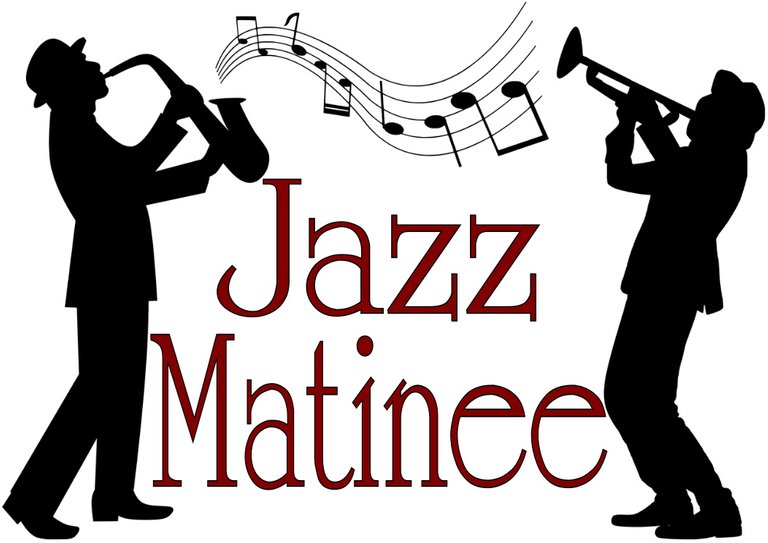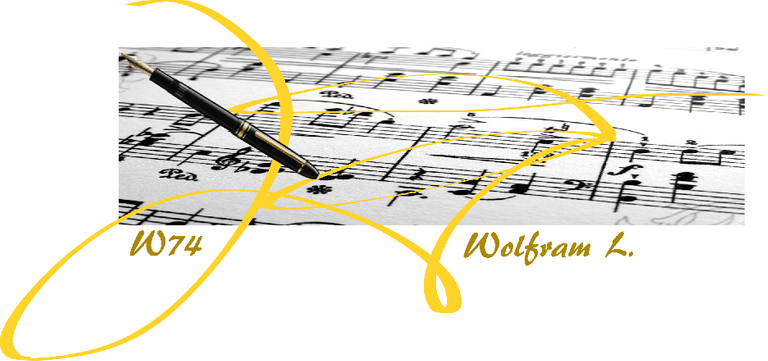
The eternal plant, growing out of the roots of New Orleans jazz.

If anyone has ever managed to unite the entire range of New Orleans jazz in his music, it is certainly Troy Andrews, better known as Trombone Shorty.
Born in New Orleans on January 2, 1986, he grew up in the Tremé quarter of the city, which is considered the most musical in the Southern metropolis. By the way, the locals call Tremé also Backatown, which immediately caused Trombone Shorty to name one of his LP's so to mention as a homage. By the way, Troy got his nickname from his older brother, who saw the little plug, when he was just 4 years old, playing the gigantic trombone in the middle of a brass band.
Wenn jemand es je geschafft hat, die gesamte Bandbreite des Jazz aus New Orleans in seiner Musik zu vereinen, dann ist es mit Sicherheit Troy Andrews, besser bekannt als Trombone Shorty.
Am 2. Januar 1986 in New Orleans geboren, wuchs er im dortigen Stadtteil Tremé auf, der als der musikalischste in der Südstaaten-Metropole gilt. Die Einheimischen nennen Tremé übrigens Backatown, was Trombone Shorty sofort zum Anlass nahm, eine seiner LPs sozusagen als Hommage so zu benennen. Den Beinamen hat Troy übrigens seinem älteren Bruder zu verdanken, der den kleinen Stöpsel, als er gerade 4 Jahre alt war, inmitten einer Brass-Band mit der riesigen Posaune hantieren sah.
But before Troy more or less dedicated himself to the trombone, he learned to play the marching drum and the trumpet, which he mastered so well, at the age of 6, that he could easily keep up with his big brother, who was already playing in a jazz band and was called the Satchmo of the Ghetto in the neighborhood. Only a few years later, he formed his band with his peers. They played mostly on Jackson Square, where, as a street band, they could earn up to 400 dollars on a weekend. At 14, they were allowed to play small local clubs for the first time, where Bono and The Edge from U2 got to see Trombone Shorty live for the first time. Later, The Edge said of that gig, The place was upside-down when we arrived. There was a little funk band playing just brass. I had never heard or seen anything like that before. Shorty completely blew us away. After a few tequilas, Bono and I danced across the tables with a bunch of girls. It was one of those nights, you will never forget.
Doch bevor Troy sich mehr oder weniger ganz der Posaune verschrieb, erlernte er das Spielen der Marschtrommel und der Trompete, welche er mit 6 Jahren bereits so gut beherrschte, dass er locker mit seinem großen Bruder mithalten konnte, der längst in einer Jazz-Band spielte und im Viertel der Satchmo of the Getto genannt wurde. Nur wenige Jahre später gründete er seine eigene Band mit Gleichaltrigen. Am liebsten spielten sie auf dem großen Jackson Square, wo sie als Straßenband an einem Wochenende bis zu 400 Dollar einspielen konnten. Mit 14 durften sie erstmals in kleinen lokalen Clubs auftreten, wo Bono und The Edge von U2 Trombone Shorty erstmals live erleben durften. Später sagte The Edge zu dieser Begegnung: Der Laden stand kopf, als wir dort ankamen. Es spielte eine kleine Funk-Band, die nur aus Blechbläsern bestand. So etwas hatte ich noch nie zuvor gehört oder gesehen. Shorty hat uns vollkommen umgehauen. Nach ein paar Tequilas tanzten Bono und ich mit einer Horde Mädchen über die Tische. Es war eine dieser Nächte, die man nie vergessen wird.
Anyone who has ever been able to watch Trombone Shorty live on stage, can very well follow this statement. At the age of 16, he recorded his first album, Trombone Shorty's Swingin' Gate, which, in addition to some classics, also contained 6 of his own compositions. While these reflected the musical diversity Shorty grew up with, he weaved in new, contemporary sounds that prompted one critic to describe him as a young jazz outlaw with funky appeal.
Trombone Shorty, on the other hand, describes his musical act something like this: I want to avoid recycling anything that has been played often enough anyway. I would like to keep developing, but never forget that music has to be fun and inspire people to dance. He proved this with the album Backatown, which climbed to the top of the jazz charts and was nominated for a Grammy.
Wer Trombone Shorty je live auf der Bühne erleben durfte, der kann sehr wohl diese Aussage nachvollziehen. Mit 16 nahm er sein erstes Album, Trombone Shorty’s Swingin’ Gate, auf, das, neben einigen Klassikern, auch sechs eigene Kompositionen beinhaltete. In diesen spiegelte sich zwar die musikalische Vielfalt wider, mit der Shorty aufwuchs, doch flechtete er neue, zeitgenössische Klänge ein, die einen Kritiker veranlasste, ihn als junger Jazz-Outlaw mit funky Appeal zu bezeichnen.
Trombone Shorty dagegen beschreibt sein musikalisches Handeln in etwa so: Ich will nichts recyceln, was sowieso schon oft genug gespielt wurde. Ich möchte mich ständig weiterentwickeln, aber nie vergessen, dass Musik Spaß bereiten muss und zum Tanzen anregt. Dies beweist er dann mit dem Album Backatown, das an die Spitze der Jazz-Charts stürmte und für einen Grammy nominiert wurde.
Backatown, by the way, was the first album Shorty produced with Verve – a record company that originally limited itself entirely to jazz. For the second album For True on the new label, the crème de la crème were invited into the studio. From Lenny Kravitz to Jeff Beck, Warren Haynes to R&B queen Ledesi, they all paid their respects and followed Shorty's call. For True was followed by Say That To Say This, on which Shorty made an exception to the exception and reinterpreted the classic Be My Lady.
In addition to his social projects, such as Horns For Schools and for the Heinz Family Foundation, Shorty wrote his story in a children's book to introduce children to music as early as possible.
In April, after Parking Lot Symphony and a five-year break, his second album will be released by Blue Note, his new record company. It is entitled Lifted and features the full band work from Trombone Shorty's artistic repertoire, which ranges from funk, blues-rock, soul and rhythm'n'blues to hip-hop, gospel, second-line grooves, Latin, and jazz.
Backatown war übrigens das erste Album, das Shorty mit Verve produzierte – einer Plattenfirma, die sich ursprünglich uneingeschränkt auf den Jazz beschränkte. Zum 2. Album For True beim neuen Label, wurde die Crème de la Crème ins Studio gebeten. Beginnend mit Lenny Kravitz, über Jeff Beck, Warren Haynes bis hin zur R&B Queen Ledesi, alle und noch einige mehr gaben sie sich die Ehre. Auf For True folgte dann Say Taht To Say This, auf dem Shorty eine Ausnahme von der Ausnahme machte und den Klassiker Be My Lady neu interpretierte.
Neben seinen sozialen Projekten wie Horns For Schools und für die Heinz Family Foundation, beschrieb Shorty seine Story in einem Kinderbuch, um Kinder möglich für an die Musik heranzuführen.
Im April erscheint nun, nach Parking Lot Symphony und einer fünfjährigen Pause, das 2. Album bei Blue Note, seiner neuen Plattenfirma. Es trägt den Titel Lifted und bringt die volle Bandbreite aus Trombone Shorty’s künstlerischem Repertoire, welches reicht von Funk, Blues-Rock, Soul und Rhythm’n’Blues über Hip-Hop, Gospel, Second-Line-Grooves und Latin bis hin zum Jazz.


Congratulations @w74! You have completed the following achievement on the Hive blockchain and have been rewarded with new badge(s):
Your next target is to reach 5500 replies.
You can view your badges on your board and compare yourself to others in the Ranking
If you no longer want to receive notifications, reply to this comment with the word
STOPCheck out the last post from @hivebuzz:
Support the HiveBuzz project. Vote for our proposal!
The main thing is, that you count. I don't necessarily have it with the numbers anyway.
You're welcome @w74
"Say That to Say This". BK Jackson (tenor saxophone), Troy “Trombone Shorty” Andrews (trombone), Dan Oestreicher (baritone saxophone), Pete Murano (guitar), Michael Ballard (electric bass) and Joey Peebles (drums). From the album Say That to Say This (2013) by Trombone Shorty.
Thank you for the rousing encore.
When compiling the posts, the same question always arises anyway: which titles make it into the post? Often an impossibility.
Have a great day!
Your content has been voted as a part of Encouragement program. Keep up the good work!
Use Ecency daily to boost your growth on platform!
Support Ecency
Vote for new Proposal
Delegate HP and earn more
Thank you for the support. Reactions will certainly follow.